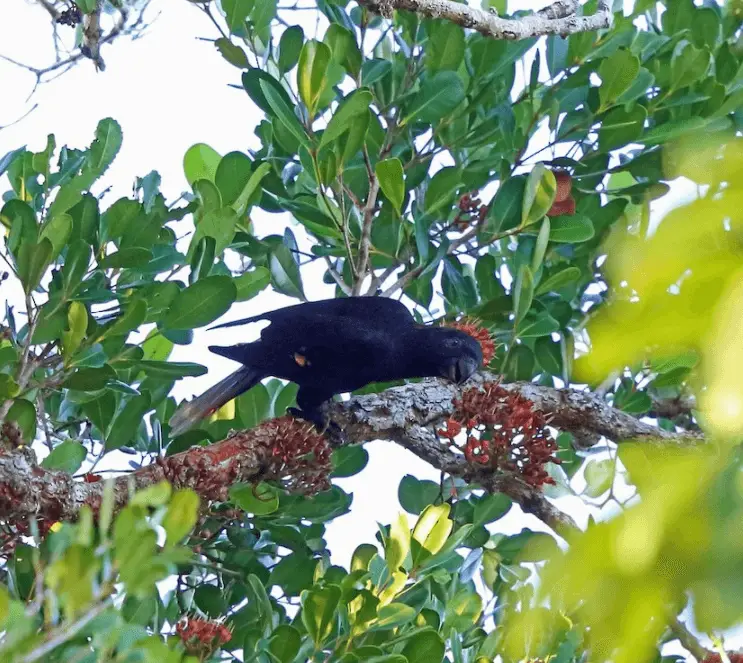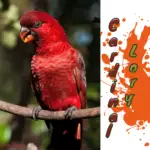
Black Lory 32 cm; 260 g. Glossy purplish-black, with bare orbital skin and skin at the base of bill black; rump blackish blue; underside of tail olive-yellow, basally red.
Systematics History
Editor’s Note: This article requires further editing work to merge existing content into the appropriate Subspecies sections. Please bear with us while this update takes place.
Subspecies
Chalcopsitta atra bernsteini Scientific name definitions
Distribution
Chalcopsitta atra atra Scientific name definitions
Distribution
Chalcopsitta atra insignis Scientific name definitions
Distribution
Distribution
Editor’s Note: Additional distribution information for this taxon can be found in the ‘Subspecies’ article above. In the future, we will develop a range-wide distribution article.
Habitat
Open habitats include coastal plantations, grassy savanna, and forest edge; also mangroves, Nypa palm forest, freshwater swamp, and dryland forest; even very open, stunted forest on limestone.
Movement
No information, but occurrence in large flocks and use of open habitats, which may exhibit pronounced seasonal regimes, suggest some local displacements may occur.
Diet and Foraging

black lory bird
Seen feeding at flowering Schefflera shrubs.
black lory eating food
SOURCE:Kanhaiya Sir
Sounds and Vocal Behavior
Not well documented. The commonest call is a very shrill, up-slurred screech, uttered either singly or in loose series.
Breeding
Male in breeding condition in Dec. In captivity: two eggs, size 31 mm × 25·7 mm; incubation lasting c. 25 days; nestling period c. 75 days.
Training With a Black Lory
SOURCE:Parenting Parrots
Conservation Status
Not globally threatened. CITES II. A BirdLife “restricted-range” species. Locally common, often in large flocks, but a better understanding of each race’s populations is needed. International trade was moderately high in the late 1980s, with 2808 exported in the four years 1987–1990; commercial importation into the EC from Indonesia was banned in Sept 1991.
Charlie bird, black lory
SOURCE:Lisa Everett




















